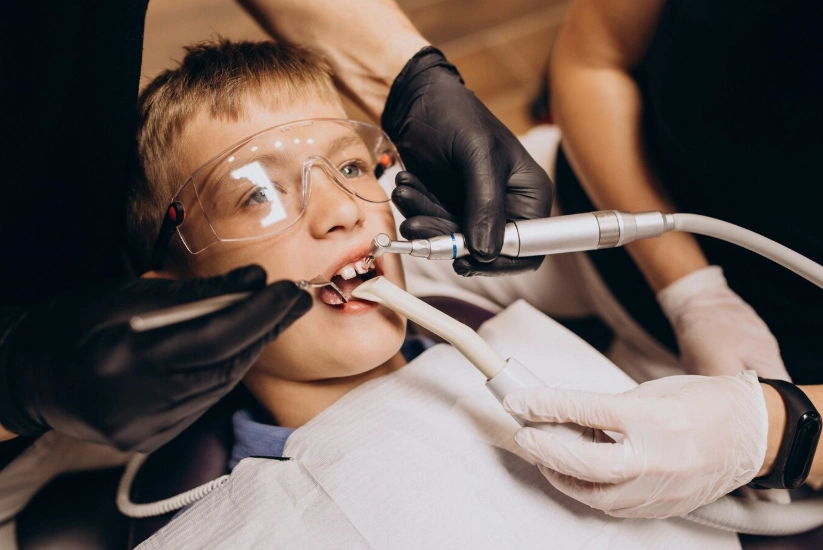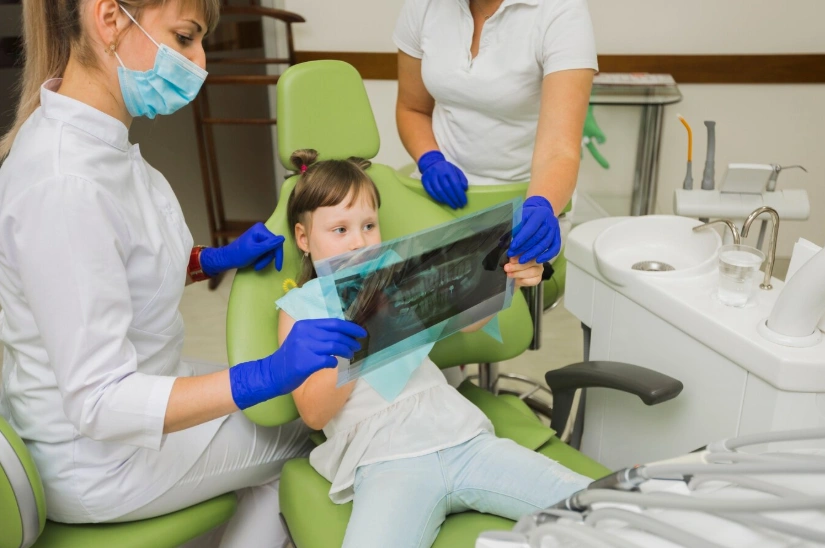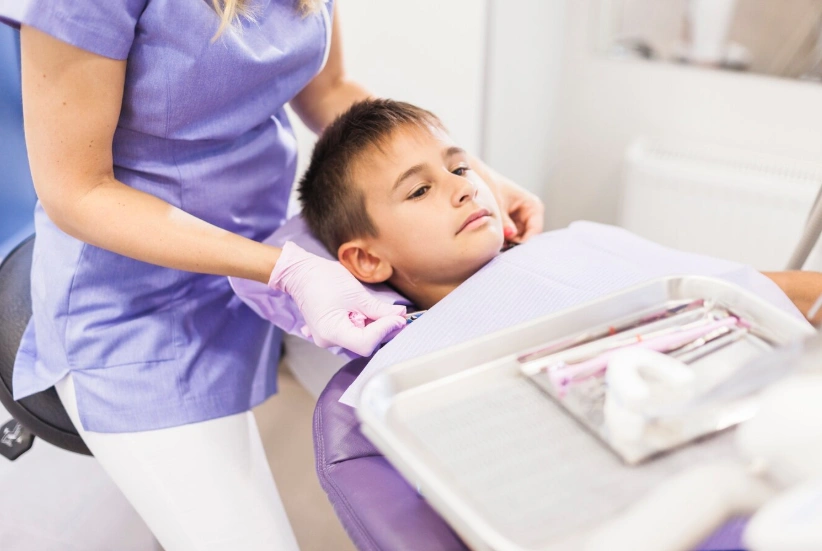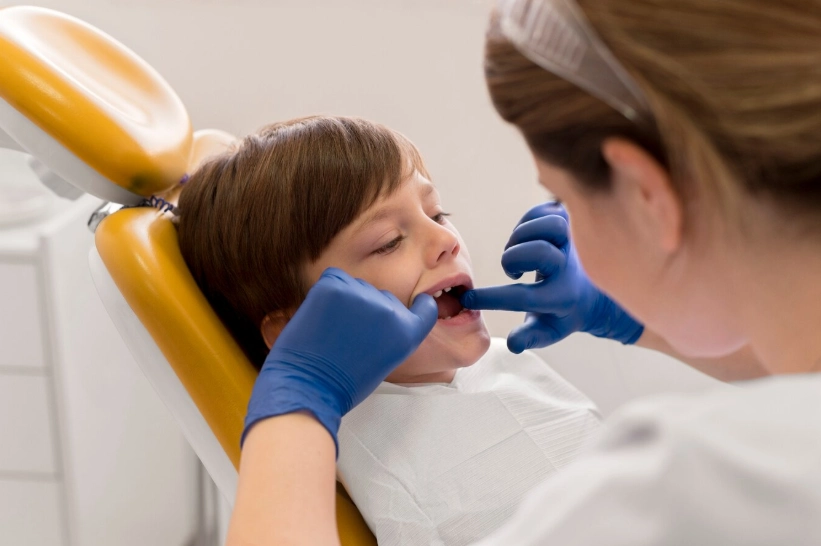Dental Fillings for Children: What’s the Right Age to Start?

From our Lema Dental Clinic in Istanbul, the need for early oral care is usually predicated on a question that parents always find themselves asking: At what age should my kid get their primary cavity filled? Irrespective, whether it is second or first teeth dental veneers or children’s dental fillings, Lema Dental Clinic is always sure to find the problem at the earliest possible time and give the patients a sympathetic treatment. So let’s dive deep into the question that’s very much a reality for moms, dads, and all those who care about a little smile.
What is the ideal age for a child’s first dental filling?

While there’s no definite age that is deemed as the “perfect age,” the majority of kids who need fillings are in the age group 3 to 7 years. It may sound crazy, but yes, even milk teeth can decay and at a riper age than you could suspect. Some kids may even exhibit caries at the age of 2!
It all comes down to one thing: sugar and brushing habits. Things get problematic if the kids are in the habit of having juice, candy, and snacks, and at the same time, skip brushing before going to bed (this is nothing new to you, is it?). Over the night, if sugar is left there on the teeth, bacteria get food from it and generate acids that lead to caries in teeth, even the ones of baby teeth. That’s when a small and safe filling can be used by the dentist to protect the teeth from bacterial action, thus enabling the teeth to fall out naturally.
💡 Fun Fact: Even if the first set of teeth is not permanent, cavities that are not treated can cause infections, pain, and the development of problems in adult teeth in the future.
How do dentists decide when to fill a child’s cavity?
Paediatric dentists are selective in filling the cavities they encounter; they do not fill each and every cavity appearing in the teeth. In reality, they weigh several factors before making up their minds about tooth restoration.
- Size of the cavity – Is it only a white spot or a hole?
- Location – Is the cavity close to a nerve or on a biting surface?
- Life span of the tooth – Is it a baby tooth that is going to fall out soon?
- Child’s symptoms – Does the child suffer from pain, sensitivity, or is there any swelling?
There are cases when the tooth is small and the decay is expected to be minor, and the dentist decides not to treat it at once but to monitor it instead. Besides, children may feel growing decay or pain, and in this case, a filling is the most reliable way to avoid bigger problems like abscesses or infections.
Are dental fillings safe for toddlers and young children?

Yes, absolutely safe. The dental fillings of modern times used for kids are:
- Non-toxic
- Durable
- Tooth-colored commonly known as (so no silver showing when they smile)
- Easy and fast to be placed, thus minimizing the time a child spends in the dental chair
We, at Lema Dental Clinic, mostly use composite resin that is not only tooth-colored like the natural teeth but also requires little drilling. If kids are too young or anxious, sedation or laughing gas can be given to them so that they feel at ease and without fear or anxiety.
One thing to remember is that fillings are not painful. This would be a surprising moment since kids would find out that it is faster than they had thought, and most of them would leave with a sticker and a bright smile.
What types of fillings are used for children’s teeth?
The choice of materials used is usually dependent on the age of the child, the location of the tooth, and how deep the cavity is. Here’s a description:
🟡 Composite Resin Fillings
- Great for front or visible teeth
- Makes use of a direct bond
- Are similarly the most common entities for modern children’s fillings
- Carry out a direct bonding dental filling procedure
🟠 Glass Ionomer Cement (GIC)
- Are free with the use of the provided fluoride to the tooth by way of strengthening.
- Even though they cannot compete with composites in strength, they are friendly to deciduous teeth.
- Very often, youngsters or remote parts of teeth in the mouth that are very difficult to reach are treated with it.
⚪ Silver Amalgam Fillings
- Hard-wearing and durable, but also not so much discreet.
- Not so popularly used for kids currently, except in some cases.
- Primarily used where the situation calls for only molars or deep back teeth.
💡 Pro Tip: Ask your dentist what they recommend based on your child’s cavity type, and also the age and dental history of your child.
How to care for your child’s teeth after a dental filling?

After your child’s filling is in place, it is very important that the area is kept clean regularly, as this will prevent any future cavities. Here are a few pointers that would be useful to know:
🎯1. Brushing Routine: Brush twice daily with a children’s fluoride toothpaste and a soft-bristle toothbrush.
🍎 2. Healthy Diet: Limit sugary snacks and sticky candies. Think fruits, veggies, yogurt, and cheese.
🦷 3. Routine Checkups: Every 6 months, you should bring your kids to the dentist for a thorough cleaning and check-up to see if your child’s filling is holding up properly and measure their oral health.
🍼 4. Watch for Clenching or Grinding: Some children who grind their teeth may wear out their fillings quicker – your dentist can help by providing a guard to protect teeth at night.
📋 5. Keep Calm If Sensitivity Happens: For some hours after the procedure, kids might feel the pain that comes with the cold or hot drink, which is normal and usually ends in a week. Otherwise, seek the dentist’s consultation.
Why Baby Teeth Matter More Than You Think
“Won’t they get out anyway?” If this is what you are thinking, then, yes, you are correct, but it doesn’t mean that the baby teeth are of no value. Baby teeth:
- Ensure that adult teeth emerge straight!
- Facilitate the child in chewing and speaking coherently.
- They are a barrier to infections that could be harmful to the adult tooth buds.
- Enhance jaw development.
Early loss of milk teeth or decay of them can cause not only shifting, crooked teeth but also a delay in the eruption of adult teeth. This is why one cavity still can’t be overlooked. It should still be treated as an emergency.
The Role of Early Intervention: Stop Cavities Before They Start
The reason behind kids not needing dental fillings goes back to prevention tactics, and this is where the role of early intervention comes into play. The choice of the Lema Dental Clinic for all new parents is given below:
👶 First Visit by Age 1
Yes, you read it right. Research evidence proves, it’s not a wise idea to visit the dentist once in distress, stress out, and it’s quite possible to recover without addressing the issue once, even though one might last with the pain in that case, whereby nothing seems to drag you into the doctor’s room. When the scenario has reached a place where the worst thing has already happened, the best course of action may be to visit a specialist in emergency medicine right after the occurrence of the experience. Thus, contact with the COVID-19 victims significantly spreads in the environment, resulting in the transmission of the disease to a more extensive area of the community.
🍼 No Bottle Overnight
- Heat cold or hot food.
- Cheeks being puffed and food being spit out.
- Swollen and red gums.
- Black colors or cavities on the tooth.
- Breath that cannot be explained.
If you notice any of these, don’t wait—starting the treatment early will be much easier than dealing with the pain later on.
Sedation Children: Is There a Need?
Children who are difficult to manage during usual dental procedures/trips may opt for dental sedation. This specially designed therapy could be a great option for:
- Multiple tooth filling processes are carried out simultaneously.
- Children who are too young to be operated on.
- Kids with mental or physical disabilities or sensory sensitivity.
- Cavities needing deep treatment or prolonged cases.
Lema Dental Clinic provides various safe, monitored sedation options in a calm and caring environment to minimize the fear of your child during the visit.
Frequently Asked Questions: Dental Fillings for Children
By their first birthday or within 6 months of their first tooth coming in. Early visits help detect issues before they become serious.
Yes, fillings are safe and commonly done. Materials used are non-toxic and specifically chosen for children’s dental needs.
Tooth-colored composite fillings are usually preferred. They’re safe, blend in naturally, and require less drilling.
It’s common, but it should be treated quickly. Ignoring it can lead to infection or damage to the adult tooth underneath.
Yes, many kids develop cavities by this age. Proper care and regular dental visits help reduce the risk moving forward.




